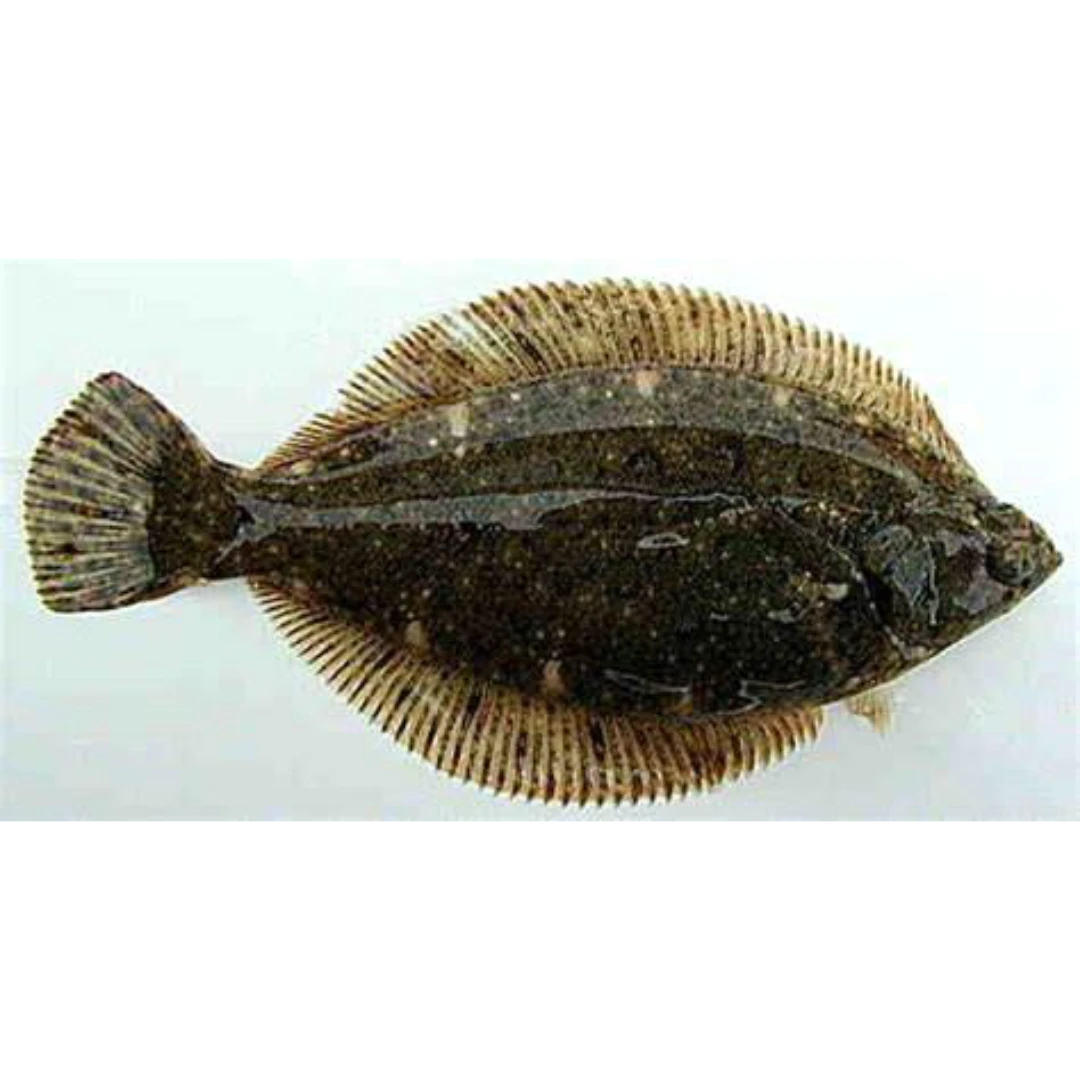
Description
眞子ガレイ MAKO KAREI - FRESH WILD MARBLED FLOUNDER - Pseudopleuronectes yokohamae
Location/Origin
Hokkaido or Nagasaki
Size/Weight
3 - 4 lbs per piece (Actual Weight May Vary)
Texture/Flavor Profile
Mako Karei, or Marbled Flounder, offers a delicate yet distinct flavor that dances between mild sweetness and umami richness. Its texture is tender yet slightly chewy, making each bite an exploration of depth. The marbled flounder’s meat is prized for its translucent white flesh that turns an opaque, pearly shade when prepared, retaining a beautifully moist and buttery mouthfeel.
Availability/Seasonality
Marbled flounder reaches its peak quality during the summer months, especially from the waters off Hokkaido, Japan. It’s most sought after between late spring and early summer when it boasts the ideal balance of fat and flavor. While it can be found throughout the year, the summer catch is truly exceptional in taste and texture.
About
The Mako Karei (Pseudopleuronectes yokohamae), also known as the Marbled Flounder, is a flatfish revered in Japanese cuisine. This demersal species lives in the sandy and muddy bottoms of coastal waters. With both eyes positioned on one side of its head, the marbled flounder stands out for its unique physiology and marbled, camouflaging pattern. Renowned for its culinary versatility, Mako Karei holds a special place in the hearts of sushi aficionados, especially when caught fresh from Hokkaido’s pristine waters.
Preparation
Mako Karei shines brightest in its simplest forms. Sashimi lovers appreciate its natural sweetness when served raw, highlighting the freshness of the sea. For sushi, its subtle flavors pair wonderfully with a touch of soy sauce and wasabi. Alternatively, the marbled flounder can be lightly grilled with lemon and soy, pan-fried until crisp, or simmered in traditional Japanese sauces made from mirin, sake, and soy sauce. Its flavor profile pairs exceptionally well with grated daikon, making it an ideal companion for various Japanese dishes.
Nutritional Value
Rich in lean protein and essential nutrients, Mako Karei is a healthy choice. It offers Omega-3 fatty acids, vitamin D, and B vitamins, supporting overall well-being. Being low in fat yet high in flavor makes it a suitable option for those seeking a nutritious, light meal that doesn’t compromise taste.
Selection and Storage
When selecting Mako Karei, look for flesh that is firm, translucent, and devoid of any discoloration. A fresh marbled flounder will have a faint ocean aroma, a key indicator of its quality. Store it in the refrigerator and consume it within 2-3 days for optimal flavor and texture. If you need to store it longer, freeze the fillets in an airtight bag, preserving their taste for up to a month.
Summary
Mako Karei, or Marbled Flounder, is a delicate summer treasure with a tender, subtly sweet taste and a mild umami flavor. Whether enjoyed raw as sashimi, delicately fried, or grilled to perfection, it’s a versatile delight. This premium fish captures the essence of Japanese cuisine, offering an exquisite experience that embodies the richness of the sea.
Location/Origin
Hokkaido or Nagasaki
Size/Weight
3 - 4 lbs per piece (Actual Weight May Vary)
Texture/Flavor Profile
Mako Karei, or Marbled Flounder, offers a delicate yet distinct flavor that dances between mild sweetness and umami richness. Its texture is tender yet slightly chewy, making each bite an exploration of depth. The marbled flounder’s meat is prized for its translucent white flesh that turns an opaque, pearly shade when prepared, retaining a beautifully moist and buttery mouthfeel.
Availability/Seasonality
Marbled flounder reaches its peak quality during the summer months, especially from the waters off Hokkaido, Japan. It’s most sought after between late spring and early summer when it boasts the ideal balance of fat and flavor. While it can be found throughout the year, the summer catch is truly exceptional in taste and texture.
About
The Mako Karei (Pseudopleuronectes yokohamae), also known as the Marbled Flounder, is a flatfish revered in Japanese cuisine. This demersal species lives in the sandy and muddy bottoms of coastal waters. With both eyes positioned on one side of its head, the marbled flounder stands out for its unique physiology and marbled, camouflaging pattern. Renowned for its culinary versatility, Mako Karei holds a special place in the hearts of sushi aficionados, especially when caught fresh from Hokkaido’s pristine waters.
Preparation
Mako Karei shines brightest in its simplest forms. Sashimi lovers appreciate its natural sweetness when served raw, highlighting the freshness of the sea. For sushi, its subtle flavors pair wonderfully with a touch of soy sauce and wasabi. Alternatively, the marbled flounder can be lightly grilled with lemon and soy, pan-fried until crisp, or simmered in traditional Japanese sauces made from mirin, sake, and soy sauce. Its flavor profile pairs exceptionally well with grated daikon, making it an ideal companion for various Japanese dishes.
Nutritional Value
Rich in lean protein and essential nutrients, Mako Karei is a healthy choice. It offers Omega-3 fatty acids, vitamin D, and B vitamins, supporting overall well-being. Being low in fat yet high in flavor makes it a suitable option for those seeking a nutritious, light meal that doesn’t compromise taste.
Selection and Storage
When selecting Mako Karei, look for flesh that is firm, translucent, and devoid of any discoloration. A fresh marbled flounder will have a faint ocean aroma, a key indicator of its quality. Store it in the refrigerator and consume it within 2-3 days for optimal flavor and texture. If you need to store it longer, freeze the fillets in an airtight bag, preserving their taste for up to a month.
Summary
Mako Karei, or Marbled Flounder, is a delicate summer treasure with a tender, subtly sweet taste and a mild umami flavor. Whether enjoyed raw as sashimi, delicately fried, or grilled to perfection, it’s a versatile delight. This premium fish captures the essence of Japanese cuisine, offering an exquisite experience that embodies the richness of the sea.

